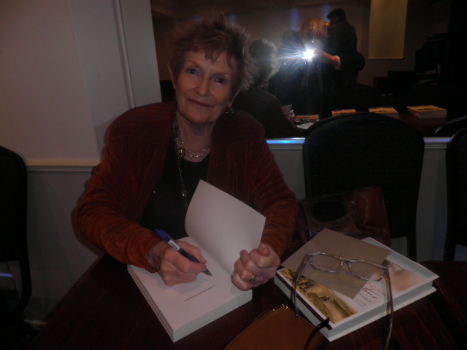
1st February 2014, Julie Davidson: Discovering Mrs Livingston
Marginalised for much of her life and often unhappy, Mary Moffat Livingstone's experience of Africa was greater than her husband's. She was born and brought up in southern Africa as the daughter of the highly-respected missionary Robert Moffat, who hailed from Ormiston in East Lothian and became a Setswana-speaker. No great beauty, she was, however, credited with having a kind smile and bright dark eyes, and it was possibly an attack of cerebral malaria that caused her passive appearance. Her mother had ten children, two of whom died, and her childhood home was at Kuruman, on the Missionary Road to the Interior, which brought Livingstone into her life.
Kolobeng, site of Livingstone's third mission, was to be her home for five years, the longest period that she and Livingstone spent together. He had come to the Continent with the London Missionary Society, but left settled mission work to become an explorer, with a vision of finding a navigable route into the interior to bring "Christianity, civilisation and commerce" to the tribes and give them them an alternative economy to the slave trade.
Mary was annually pregnant, and after their first family expedition across the Kalahari her fourth child, Elizabeth, died at six weeks and is buried at Kolobeng. On their second expedition, with three children under five, the entire party nearly died of thirst because Livingstone was determined to reach a tributary of the Zambezi before anyone else. The expeditionary diet was poor, lacking fresh fruit and vegetables, and their fifth child, Oswell, was born under a camelthorn tree in the middle of the desert. When Livingstone reached the upper Zambezi he finally decided he could no longer travel with his wife and children. He was determined to explore the entire valley, so sent his family to the UK, where Mary endured the unhappiest four years of her life. She first arrived to stay with his relatives in Hamilton, where her colonial accent and unfamiliarity with handling money made her an odd figure, and there was a serious quarrel with his father which marked the start of a wretched, cash-strapped life,living in cheap rented rooms in Scotland and England, often dependant on the charity of her parents' friends. She started drinking, had a crisis of faith and a nervous collapse, but was saved from ruin by the Braithwaites of Kendal, Quaker friends of the Moffats, in time for Livingstone's triumphant return from Africa, the national hero who had "discovered" the Zambezi cataract which he named the Victoria Falls. When he returned to Africa to establish whether the Zambezi was navigable from its Indian Ocean delta, he knew he could not leave Mary alone again. She joined the expedition but another pregnancy was diagnosed on the voyage to the Cape, and she had to travel to her parents at Kuruman, where her last child, a daughter, was born.
Mary returned to Scotland where she lived in Glasgow with her five children until Livingstone summoned her again to the Zambezi. He had his reputation to enhance, she had only her life to lose. Three months after their reunion she died of an acute malaria attack in riverside Shupanga House, which had been used as a holding pen for slaves. Her grave remains there in what is now the cemetery of a Catholic mission. Youngest child Anna Mary could remember only the little red shoes which her mother gave her when she said goodbye.